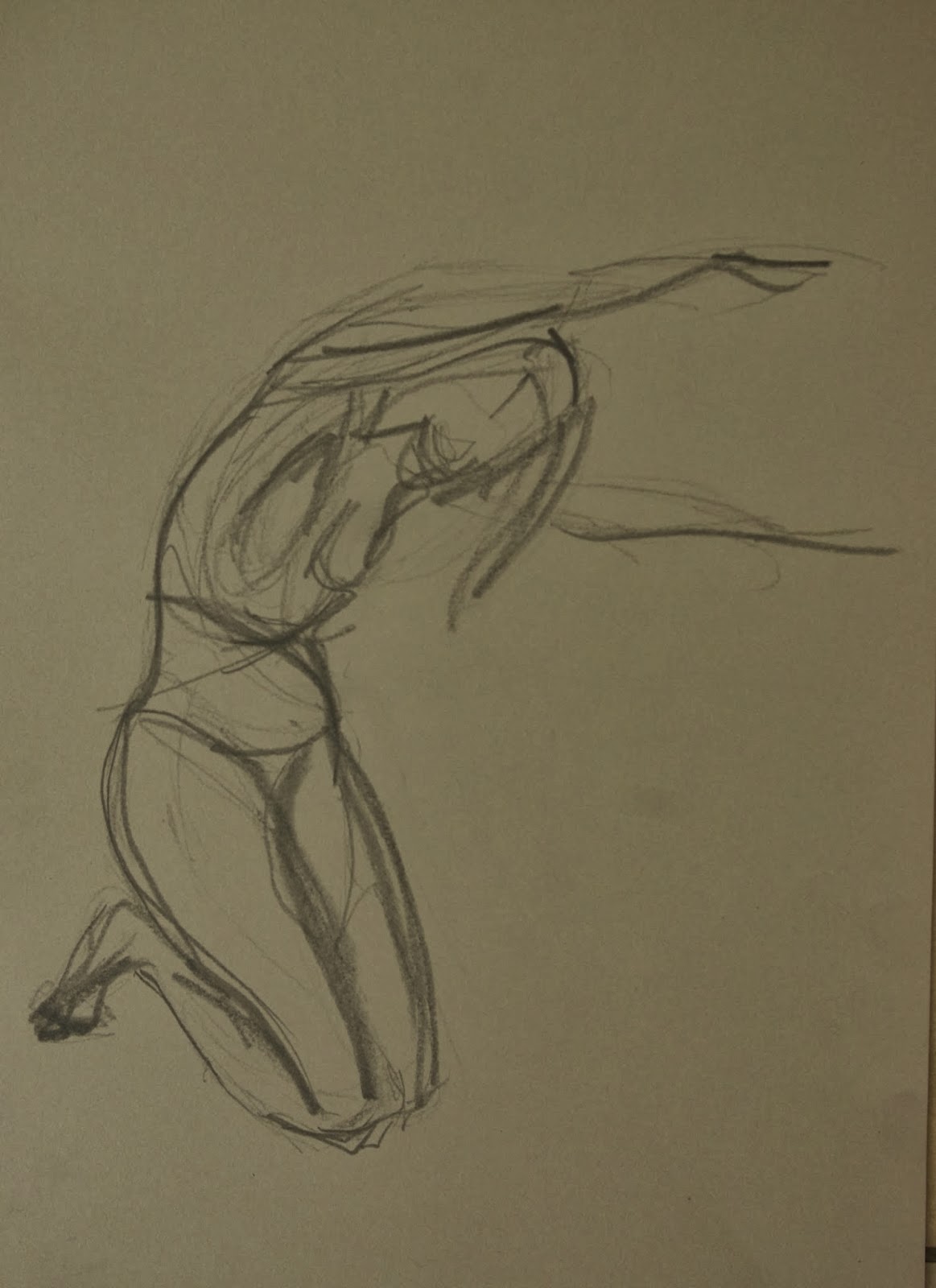I had a slight handicap with the gesture project initially as my models were busy so I had to find another way to proceed. On the advice of a fellow student I tried Quickposes.com this website allows you to practice drawing rapid poses by putting up images of models for varying lengths of time (of you choice). Clearly it isn't the same as drawing from life as it is drawing from a two dimensional image but it was good practice and I enjoyed it.
Also on this website I found some gesture drawings by Ryan Woodward as well as a link to his animation 'conte' animated' I really like the energy of these drawings and the way thet movement is captured with a few marks. Also in my sketchbook (4 : pages 14 and 15) I inserted gesture drawings by Auguste Rodin, John Singer Sargeant and Henri Matisse.
 |
Sketchbook 5: Pages 12 and 13 - Female torso drawn with coloured ink applied
with syringes and needles and then another sheet placed over it to create a
monoprint of sorts
Facing page - Gesture research Ryan Woodward.
|
Auguste Rodin often made blind gesture drawings encouraging the model to move around while he was drawing. A quote I found from Rodin is " What is drawing? Not once in describing the shape of that mass did I shift my eyes from the model. Why? because I wanted to ensure that nothing evaded by grasp of it . - my objective is to test whether my hands already feel what my eyes see". I like this as I have developed something of a passion for blind drawing. It is something I will do to get me warmed up when starting a drawing session and I love the quality of line that it produces as the hand moves freely over the page unencumbered by the slow though processes of visual comparison between what is in front of you and what is emerging on the page.
I put some photos of John Singer Sargeant's sketches of Spanish dancers in my sketch book - what I like about these images is that the multiple lines used are not a reflection of uncertainty - rather they are confident lines capturing the rapid movement of the figure (Sketchbook 4 Page 15)
 |
Sketchbook 5: Page 16 and 17
" minute and 1 minute Poses |
 |
Sketchbook 5: Pages 18 and 19
1 minute and 30 Second poses
|
 |
Sketchbook 4 Pages 84 and 85
Gesture drawings made with string dipped in ink
and marks made with inky fingers |
 |
Sketchbook 4: Page 86
Marks made with string and ink.
Fine lines made with the tip of the string
Broader marks bade by dragging the
body of the saturated string across the page |
 |
Sketchbook 4 Page 87: Marks made with string
and ink as above |
 |
Sketchbook 5 : Page 20 and 21 30 second gesture drawings
using conte' neocolour crayon and water and ink with a sumi-e brush
|
 |
Sketchbook 5: Pages 22 and 23
Development of some of the 30 second drawings using an insulin syringe and needle
to spray ink onto the page - trying to depict movement |
 |
Sketchbook 5: Pages 24 and 25
Further gesture research - Tracey Emin
I am interested in how she manages to maintain the free
and gestural quality of the original drawing when producing an
embroidered image.
|
I found that with the first few 2 minute sketches, although it felt like very little time I was trying to represent everything and outline the whole figure. As the time got shorter, paradoxically the drawing became easier - perhaps because I was feeling that there was no pressure to think about proportions and likeness.
I experimented with various ways of making the gestures . I found that when I used drawing tools which were less controllable such as dragging floppy string dipped in ink across the page or spraying ink onto the page from a syringe and needle, the results were quite pleasing. I think that this may be related to the fact that it was necessary to be more selective about the number of lines I drew.


































_-_Google_Art_Project.jpg)



